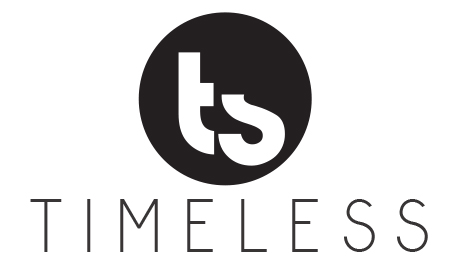
by timelessnc | Jun 21, 2018 | Retirement Income Planning
According to a recent Gallup study, many Americans don’t feel confident about their ability to fund a comfortable and enjoyable retirement. The annual survey about Americans’ financial concerns found that 54 percent of respondents are worried about retirement. That’s enough to make retirement the top financial concern for the 17th year in a row.1
Those concerns may be justified. Many Americans are behind on their retirement savings or haven’t sufficiently planned for potential risks. Even if you’ve accumulated enough assets for retirement, you could still face serious financial challenges after you leave the working world.
Below are three surprising things that could derail your retirement if you don’t plan properly. A comprehensive retirement plan can help you analyze these risks and more, and then implement a protection strategy. A financial professional can help you take action against these risks to protect your golden years.
Life Expectancy
There’s no doubt that people are living longer. According to the Centers for Disease Control and Prevention, a 65-year-old male in 1950 could expect to live another 12.8 years. By 2014 that number had increased to 18 years.2
At first glance, a long life expectancy may seem like a good thing. By living longer, you get to enjoy a longer retirement and spend more time with your family. However, a long life span can put a strain on your finances. The longer you live, the more years you may need to fund out of your personal savings.
There are a few ways you can minimize longevity risk. One is to make sure you’ve accumulated enough assets to fund a retirement that can last multiple decades. Another is to manage your spending so your assets last. You also may want to consider tools such as an annuity, which can generate guaranteed lifetime income.
Health Care
Think Medicare will cover all your medical expenses? Think again. Medicare is a valuable resource for retirees, but it doesn’t pay for everything. There are many treatments that Medicare covers only partially or doesn’t cover at all.
That means you could face a significant amount of out-of-pocket health care costs in retirement. In fact, Fidelity estimates that the average 65-year-old couple will face $280,000 in out-of-pocket medical expenses. That figure doesn’t even include long-term care, which can be very costly.3
You can minimize exposure to health care costs by funding a health savings account (HSA). These accounts allow you to take tax-free distributions to pay for medical expenses. You also may want to consider a long-term care insurance policy to cover long-term care costs.
Boredom
Looking forward to a free and open schedule in retirement? You’re not alone. Free time is one of the most appealing aspects of retirement. However, many retirees soon find that they have too much free time on their hands. They may feel that they don’t have purpose or simply become bored.
The risk is that you fill your free time with costly activities such as travel, shopping or new hobbies. It’s important to enjoy retirement, but you don’t want to blow a hole in your budget in the early years of retirement. You can manage this risk by developing a budget and sticking to it. A financial professional can help you create your retirement budget.
Ready to minimize risk in your retirement? Let’s talk about it. Contact us today at Timeless Solutions. We can help you analyze your needs and develop a strategy. Let’s connect soon and start the conversation.
1http://news.gallup.com/poll/210890/americans-financial-anxieties-ease-2017.aspx
2https://www.usatoday.com/story/money/columnist/powell/2016/10/05/life-expectancy-actuaries-live-die-retire-retirement/89407296/
3https://www.fidelity.com/viewpoints/personal-finance/plan-for-rising-health-care-costs
Licensed Insurance Professional. This information is designed to provide a general overview with regard to the subject matter covered and is not state specific. The authors, publisher and host are not providing legal, accounting or specific advice for your situation. By providing your information, you give consent to be contacted about the possible sale of an insurance or annuity product. This information has been provided by a Licensed Insurance Professional and does not necessarily represent the views of the presenting insurance professional. The statements and opinions expressed are those of the author and are subject to change at any time. All information is believed to be from reliable sources; however, presenting insurance professional makes no representation as to its completeness or accuracy. This material has been prepared for informational and educational purposes only. It is not intended to provide, and should not be relied upon for, accounting, legal, tax or investment advice. This information has been provided by a Licensed Insurance Professional and is not sponsored or endorsed by the Social Security Administration or any government agency.
17695 – 2018/5/30

by timelessnc | Jun 11, 2018 | Retirement Income Planning
Do you know whether you’re on track to meet your retirement goals? If the answer is no, you’re not alone. A recent Gallup study found that more than 50 percent of Americans are worried that they won’t be able to fund their retirement.1
If you’re unsure about your preparedness for retirement, it’s never too late to develop a plan and take back control of your strategy. Below are a few red flags that could indicate you’re not as ready as you should be. If any of these sound familiar and you’re approaching retirement, now may be the time to take action.
You don’t know what your income will be in retirement.
Income is at the heart of retirement planning. To sustain your lifestyle in retirement, you’ll have to generate income that exceeds your living expenses. You’ll likely receive income from Social Security, a pension, personal investments and possibly other sources.
Do you know how much income you can count on each year in retirement? While you may not be able to accurately predict your exact income each year, you can probably develop a reasonable estimate. You can then use that estimate to develop a budget and identify any gaps in your savings.
You haven’t planned for health care costs.
Health care is a major expense item for many retirees. Medicare covers many health care costs, but it doesn’t cover everything. In fact, Fidelity estimates that the average retired couple will spend $280,000 on out-of-pocket medical expenses.2
Fortunately, there are steps you can take to minimize your health care expense risk. You can fund a health savings account (HSA), or you can look at supplemental Medicare policies. You may even consider long-term care insurance. If you don’t develop a plan, though, health care expenses could take you by surprise.
You’re financially supporting others.
Still providing financial support to your grown children? You have company. According to a recent study from Fidelity, 47 percent of millennials receive some form of financial assistance from their parents. More than 20 percent still live with their parents.3
It’s natural that you want to help your children. However, that financial assistance could hurt your ability to save for retirement. If you continue to support your children after you retire, you may have trouble supporting yourself.
Talk to your children about your financial goals and retirement needs, and help them develop a plan to become independent. If you provide a significant amount of assistance, you may need to implement a long-term plan in which they gradually become more independent over time.
You have a sizable amount of debt.
Debt is a difficult financial challenge at any age, but it’s especially problematic for retirees. Every dollar you use to service debt is a dollar you can’t use to pay for health care or fund your lifestyle. If you’re struggling with debt, work with your financial professional to develop a plan to pay down the balance before you retire.
You don’t have a plan.
As you may have noticed, all these issues can be resolved with planning. A comprehensive financial plan can help you identify risks and implement strategies. If you haven’t yet developed your comprehensive retirement plan, now may be the time to sit down with a financial professional and start the process.
Ready to eliminate the red flags in your retirement planning? Let’s talk about it. Contact us today at Timeless Solutions. We can help you analyze your needs and implement a strategy. Let’s connect soon and start the conversation.
1http://news.gallup.com/poll/210890/americans-financial-anxieties-ease-2017.aspx
2https://www.fidelity.com/viewpoints/personal-finance/plan-for-rising-health-care-costs
3https://www.glamour.com/story/how-much-do-your-parents-help-you-get-by
Licensed Insurance Professional. This information is designed to provide a general overview with regard to the subject matter covered and is not state specific. The authors, publisher and host are not providing legal, accounting or specific advice for your situation. By providing your information, you give consent to be contacted about the possible sale of an insurance or annuity product. This information has been provided by a Licensed Insurance Professional and does not necessarily represent the views of the presenting insurance professional. The statements and opinions expressed are those of the author and are subject to change at any time. All information is believed to be from reliable sources; however, presenting insurance professional makes no representation as to its completeness or accuracy. This material has been prepared for informational and educational purposes only. It is not intended to provide, and should not be relied upon for, accounting, legal, tax or investment advice. This information has been provided by a Licensed Insurance Professional and is not sponsored or endorsed by the Social Security Administration or any government agency.
17696 – 2018/5/30

by timelessnc | May 22, 2018 | Retirement Income Planning
Do you want to retire early? You’re not alone. According to a recent study from MSN, two-thirds of millennials want to retire before age 65.1 That’s well ahead of the current Social Security full retirement age of 67.
Retirement is a challenge at any age. Many Americans lack the needed savings to fully retire in their late 60s or even early 70s. Early retirement is an even more difficult challenge. If you retire early, you could spend more time in retirement than you did saving for retirement. You may spend many of the early years of retirement without the benefit of Social Security or Medicare.
The good news is you can retire early if you develop a plan and stay disciplined. Below are three steps to help you get started on your planning. As is the case with any financial planning, your decisions and actions should be based on your unique needs and objectives. A financial professional can help you develop and implement your strategy to retire early.
Estimate your need.
Any retirement strategy should start with an estimate of your spending needs. It’s impossible to predict your exact spending in the future, but with a little research, you can probably develop a reasonable projection.
Look at your current spending and consider how it might change when you retire. Will you downsize to a smaller home? Will you travel or take up a new hobby? How much money will you need to live? Also, remember to account for inflation up until and throughout retirement.
Once you have a spending estimate, consider how many years you may live in retirement. Those retiring at traditional age may need to plan for a retirement of 20 or 30 years. If you retire early, however, you may need to plan on funding 40 years or more of living expenses. If you multiply your annual spending estimate by your retirement duration, you should get a ballpark figure of how much you may need to save.
Calculate your savings requirement.
Of course, you may not need to fund your total living expenses with savings. You will likely benefit from Social Security, and you may have access to a pension or other source of retirement income. Deduct those income sources from your spending needs to estimate your required savings amount.
Once you know how much you need to save, you can develop a savings road map. Determine how much you should save each year to hit your target before retirement. Also, consider how your investment strategy may impact your savings growth. Be sure to consider poor investment returns and how lower-than-expected performance could affect your plans.
Once you have your savings targets in place, the hard part is staying disciplined and meeting your savings goals every month. Work to limit your unnecessary spending so you can meet your objectives.
Bridge any gaps.
You may find that even with a spending estimate and savings plan in place, you still won’t have enough to retire as early as you would like. If so, you have a few choices. You can delay retirement a bit so you can save more money, or you can find a way to save more money each year.
A third option is to scale back your retirement plans. Look for areas to reduce your projected spending. You could downsize to a smaller home or reduce your travel budget. You could also work part time or seasonally in retirement to generate extra income. Think of ways to reduce your savings need so you can still hit your target.
Ready to develop your early retirement strategy? Let’s talk about. Contact us at Timeless Solutions. We can help you analyze your needs and implement a plan. Let’s connect soon and start the conversation.
1http://www.businessinsider.com/millennials-not-saving-enough-to-retire-early-2017-6
Licensed Insurance Professional. This information is designed to provide a general overview with regard to the subject matter covered and is not state specific. The authors, publisher and host are not providing legal, accounting or specific advice for your situation. By providing your information, you give consent to be contacted about the possible sale of an insurance or annuity product. This information has been provided by a Licensed Insurance Professional and does not necessarily represent the views of the presenting insurance professional. The statements and opinions expressed are those of the author and are subject to change at any time. All information is believed to be from reliable sources; however, presenting insurance professional makes no representation as to its completeness or accuracy. This material has been prepared for informational and educational purposes only. It is not intended to provide, and should not be relied upon for, accounting, legal, tax or investment advice. This information has been provided by a Licensed Insurance Professional and is not sponsored or endorsed by the Social Security Administration or any government agency.
17596 – 2018/4/19

by timelessnc | May 10, 2018 | Retirement Income Planning
A recent Gallup study found that more than half of Americans are concerned that they won’t have enough money for retirement.1 There may be good reason for that concern, especially for baby boomers who are nearing retirement.
A study from the Insured Retirement Institute found that 42 percent of baby boomers have no retirement savings. Of those who do have savings, 38 percent have less than $100,000. And only 38 percent have estimated their savings need.2
Are you one of the many boomers who isn’t prepared for retirement? The good news is that it’s never too late to take fast action and get back on track with your savings. Below are three tips to help you correct course with your retirement savings. You may also want to consult with a financial professional to help you develop a customized plan.
Maximize your qualified account contributions.
Qualified plans such as 401(k) accounts and IRAs are popular retirement savings vehicles. They often allow for tax-deferred growth, which may help you accumulate assets faster than you would in a similar taxable account. Also, your 401(k) may offer matching employer contributions.
One of the best ways to boost your retirement preparedness is to maximize your contributions to your qualified plans. In 2018 you can contribute as much as $18,500 to a 401(k) and up to $6,000 to an IRA.3
If you’re age 50 or older, however, you can contribute even more money. You’re allowed to make up catch-up contributions of an extra $5,500 to a 401(k) and $1,000 to an IRA. Look for ways to trim your spending so you can contribute the maximum levels to your tax-deferred plans.
Look for guaranteed* income opportunities.
Longevity is an issue that many boomers fail to consider. Retirees are living longer than ever. For a 65-year-old couple today, there’s a 73 percent chance that one will live to 90 and a 47 percent chance that one will live to 95.2 Even if you save enough for retirement, it can be difficult to make those savings last multiple decades.
Guaranteed lifetime income can help you reduce the risk that you’ll run out of money in the later years of retirement. You’ll likely have some level of guaranteed income from Social Security and possibly a pension. However, you can use tools such as annuities to convert some of your savings into an income stream that’s guaranteed for life, no matter how long you live. A financial professional can help you determine which type of annuity is right for you.
Rethink your retirement plans.
Finally, it may be necessary to rethink retirement. With some simple adjustments to your plans, you can reduce your future spending and bridge your savings gap. For example, you may want to consider working a few extra years to give yourself an opportunity to save more money. Or you could downsize to a smaller home to minimize your living expenses.
Also, don’t discount the idea of working part time or seasonally in retirement. Many retirees find that they have too much time on their hands. A part-time job can help you fill your empty schedule and give you a stream of income so you can reduce withdrawals from your savings.
Ready to get your retirement back on track? Let’s talk about it. Contact us at Timeless Solutions. We can help you analyze your needs and develop a strategy. Let’s connect soon and start the conversation.
1http://news.gallup.com/poll/210890/americans-financial-anxieties-ease-2017.aspx
2https://www.planadviser.com/baby-boomers-not-enough-prepare-retirement/
3http://time.com/money/4990121/401k-ira-contribution-limits-2018/
Licensed Insurance Professional. This information is designed to provide a general overview with regard to the subject matter covered and is not state specific. The authors, publisher and host are not providing legal, accounting or specific advice for your situation. By providing your information, you give consent to be contacted about the possible sale of an insurance or annuity product. This information has been provided by a Licensed Insurance Professional and does not necessarily represent the views of the presenting insurance professional. The statements and opinions expressed are those of the author and are subject to change at any time. All information is believed to be from reliable sources; however, presenting insurance professional makes no representation as to its completeness or accuracy. This material has been prepared for informational and educational purposes only. It is not intended to provide, and should not be relied upon for, accounting, legal, tax or investment advice. This information has been provided by a Licensed Insurance Professional and is not sponsored or endorsed by the Social Security Administration or any government agency.
17597 – 2018/4/19

by timelessnc | Apr 24, 2018 | Managing Healthcare Expenses
Long-term care: It’s the elephant in the room for many retirees. According to the U.S. Department of Health and Human Services, today’s 65-year-olds have a 70 percent chance of needing long-term care at some point in the future.1
Long-term care is extended assistance with basic daily living activities such as eating, bathing, dressing and mobility. It’s often provided in a facility, but it can also be offered in the home via a private nurse or home health aide.
According to a 2017 Genworth study, the average cost of a room in an assisted living facility is $3,750 per month. In-home care may actually be more costly. The average monthly cost of a full-time home health aide is more than $4,000 per month.2 If you aggregate those costs over several years, it’s easy to see how long-term care can quickly deplete your retirement assets.
Compounding the challenge is the fact that Medicare usually doesn’t cover long-term care expenses. It may partially cover a stay in a facility that’s related to a surgery or other medical procedure. However, that coverage is often very temporary. Medicaid will usually only cover long-term care if you have few assets and little income.
Fortunately, you have options available. If you plan ahead, you can develop and implement a strategy to fund your long-term care needs. It may make sense to include an annuity as part of those plans. Below are a few ways in which an annuity can help you pay for long-term care:
Nursing Home Waiver
One of the most prevalent criticisms of annuities is that they don’t offer liquidity to help pay for emergencies. This criticism is usually sparked by surrender charges, which are a common element of annuity and life insurance contracts.
A surrender charge is a penalty you pay if you withdraw more than a certain amount from your contract in any given year. Surrender penalties are in place for a certain number of years determined before signing the contract of an annuity. Surrender periods can last from three to even ten or more years. After that period is up, there are no more surrender periods.
However, many annuities offer something called a nursing home waiver. This feature gives you the opportunity to access your contract without paying a surrender penalty if you have to stay in a nursing home or an assisted living facility. You gain instant access to your contract so you can use your funds to cover your long-term care needs.
Annuitization
One of the primary benefits of an annuity is that it can generate a reliable income stream that’s guaranteed for life. This is done through a process called annuitization. Essentially, you ask the annuity company to convert your assets into a lifetime income stream. This can be done when you open the contract or after you’ve owned the policy for months or even years.
To calculate your payment amount, the annuity company will consider the amount of assets, your life expectancy and other factors, such as prevailing interest rates. It will then pay you a fixed amount every month for the rest of your life. The payment is guaranteed, no matter how long you live.
This kind of income certainty can be helpful for any retiree, but it can be especially helpful if you need long-term care. The fixed payment gives you confidence that you can continue paying for your facility or your home health aide.
There are also instances in which annuitized income doesn’t count as a Medicaid asset. That means you may be able to receive your annuity income and also receive Medicaid benefits to pay for your care. However, these rules are complex. It’s wise to consult with a financial professional before embarking on this strategy.
Annuity-LTC Hybrids
Finally, many annuity providers have recognized the need for long-term care strategies. They have responded by introducing annuity-LTC hybrid policies. These contracts provide a blend of long-term care insurance and annuity income.
You fund the policy with a lump sum, just like you would with any other annuity contract. If you ever need care, the long-term care component can be utilized. It pays for some or all of your care, depending on the terms of your policy. If you don’t need care, you can use the annuity to provide retirement income or as a legacy for your beneficiaries.
Ready to develop your long-term care strategy? Let’s talk about it. Contact us today at Timeless Solutions. We can help you analyze your needs and develop a plan. Let’s connect soon and start the conversation.
1https://longtermcare.acl.gov/the-basics/how-much-care-will-you-need.html
2https://www.genworth.com/about-us/industry-expertise/cost-of-care.html
Licensed Insurance Professional. This information is designed to provide a general overview with regard to the subject matter covered and is not state specific. The authors, publisher and host are not providing legal, accounting or specific advice for your situation. By providing your information, you give consent to be contacted about the possible sale of an insurance or annuity product. This information has been provided by a Licensed Insurance Professional and does not necessarily represent the views of the presenting insurance professional. The statements and opinions expressed are those of the author and are subject to change at any time. All information is believed to be from reliable sources; however, presenting insurance professional makes no representation as to its completeness or accuracy. This material has been prepared for informational and educational purposes only. It is not intended to provide, and should not be relied upon for, accounting, legal, tax or investment advice. This information has been provided by a Licensed Insurance Professional and is not sponsored or endorsed by the Social Security Administration or any government agency.
Annuities are insurance products backed by the claims-paying ability of the issuing company; they are not FDIC insured; are not obligations or deposits of, and are not guaranteed or underwritten by any bank, savings and loan or credit union or its affiliates; are unrelated to and not a condition of the provision or term of any banking service or activity
Guaranteed lifetime income available through annuitization or the purchase of an optional lifetime income rider, a benefit for which an annual premium is charged. Annuities are long-term, tax-deferred vehicles designed for retirement and contain some limitations.
17507 – 2018/3/26

by timelessnc | Apr 10, 2018 | Managing Healthcare Expenses
If you’re approaching retirement, you may be in the process of developing a budget and determining how you’ll fund your cost of living. You’ll likely face expenses for things such as housing, food, utilities, travel and more. You may also face costs for things like taxes and debt.
Health care, however, is one major expense category you shouldn’t ignore. Many retirees assume that Medicare covers all health care costs. That assumption is usually incorrect. In fact, Fidelity estimates that the average retired couple will spend $275,000 on out-of-pocket medical expenses.1 That figure doesn’t even include the cost of long-term care.
The truth is that Medicare doesn’t cover everything. In fact, there are some services that aren’t covered by Medicare at all, and many are only partially covered. You’ll have to pay the difference, possibly out of your retirement assets.
This can be a difficult challenge for retirees. As you get older, your risk of suffering an injury or illness increases. While you may want the best treatment possible, you also have to preserve your assets to fund the rest of your retirement.
The good news is you can take steps to manage your health care expenses and protect your budget. Below are a few of the most common sources of health care costs in retirement. By understanding your potential medical expenses, you can develop a funding strategy.
Medicare Premiums, Deductibles and Copays
Medicare is available to all retirees age 65 and older. However, it isn’t free for all retirees. Medicare is divided into multiple parts, each of which offers different coverage. Part A covers hospitalizations and doesn’t have a premium. It does, however, come with a copay, which increases the longer you are hospitalized.
The other Medicare parts—B, C and D—are all optional and come with premiums, deductibles and copays. Those amounts depend on your level of coverage. The more robust your coverage, the higher your premiums are likely to be. You can reduce your premiums by changing your coverage, but doing so may increase your deductible and copay.
Noncovered Services
There are many services that are covered by employer plans but aren’t covered by Medicare. Some of those services include dental, vision, hearing, rehabilitation, physical therapy and more. If you have traditional Medicare parts A and B, you’ll have to pay for all those services out of pocket.
You can purchase optional Medicare protection for those services through Medicare Part C, also known as Medicare Advantage. These are policies offered by private insurance companies. Medicare Advantage policies include traditional Medicare protection plus enhanced coverage for additional services.
Of course, since Medicare Advantage is optional, it also comes with additional premiums. There are a wide range of Medicare Advantage policies available, so it’s important to consider your specific needs, budget and objectives before purchasing a policy.
Long-Term Care
The U.S. Department of Health and Human Services estimates that today’s 65-year-olds have a 70 percent chance of needing long-term care in the future.2 Long-term care is extended assistance with daily living activities such as eating, bathing, mobility and more. It’s usually provided either in a facility or in your home.
As you might expect, long-term care can be costly. According to Genworth, the average monthly cost for an assisted living facility in 2017 was $3,750. The average cost of an in-home health aide was more than $4,000.3 Because long-term care may be needed for several years, it can be a drain on your assets.
It’s helpful to develop a long-term care strategy before you enter retirement. You may consider purchasing long-term care insurance, in which an insurer covers some or all of your costs. Or you may want to accumulate funds in a health savings account to cover medical costs and long-term care expenses.
Ready to develop your health care funding strategy? Let’s talk about it. Contact us today at Timeless Solutions. We can help you analyze your needs and implement a plan. Let’s connect soon and start the conversation.
1https://www.fidelity.com/viewpoints/retirement/retiree-health-costs-rise
2https://longtermcare.acl.gov/the-basics/how-much-care-will-you-need.html
3https://www.genworth.com/about-us/industry-expertise/cost-of-care.html
Licensed Insurance Professional. This information is designed to provide a general overview with regard to the subject matter covered and is not state specific. The authors, publisher and host are not providing legal, accounting or specific advice for your situation. By providing your information, you give consent to be contacted about the possible sale of an insurance or annuity product. This information has been provided by a Licensed Insurance Professional and does not necessarily represent the views of the presenting insurance professional. The statements and opinions expressed are those of the author and are subject to change at any time. All information is believed to be from reliable sources; however, presenting insurance professional makes no representation as to its completeness or accuracy. This material has been prepared for informational and educational purposes only. It is not intended to provide, and should not be relied upon for, accounting, legal, tax or investment advice. This information has been provided by a Licensed Insurance Professional and is not sponsored or endorsed by the Social Security Administration or any government agency.
17508 – 2018/3/26






